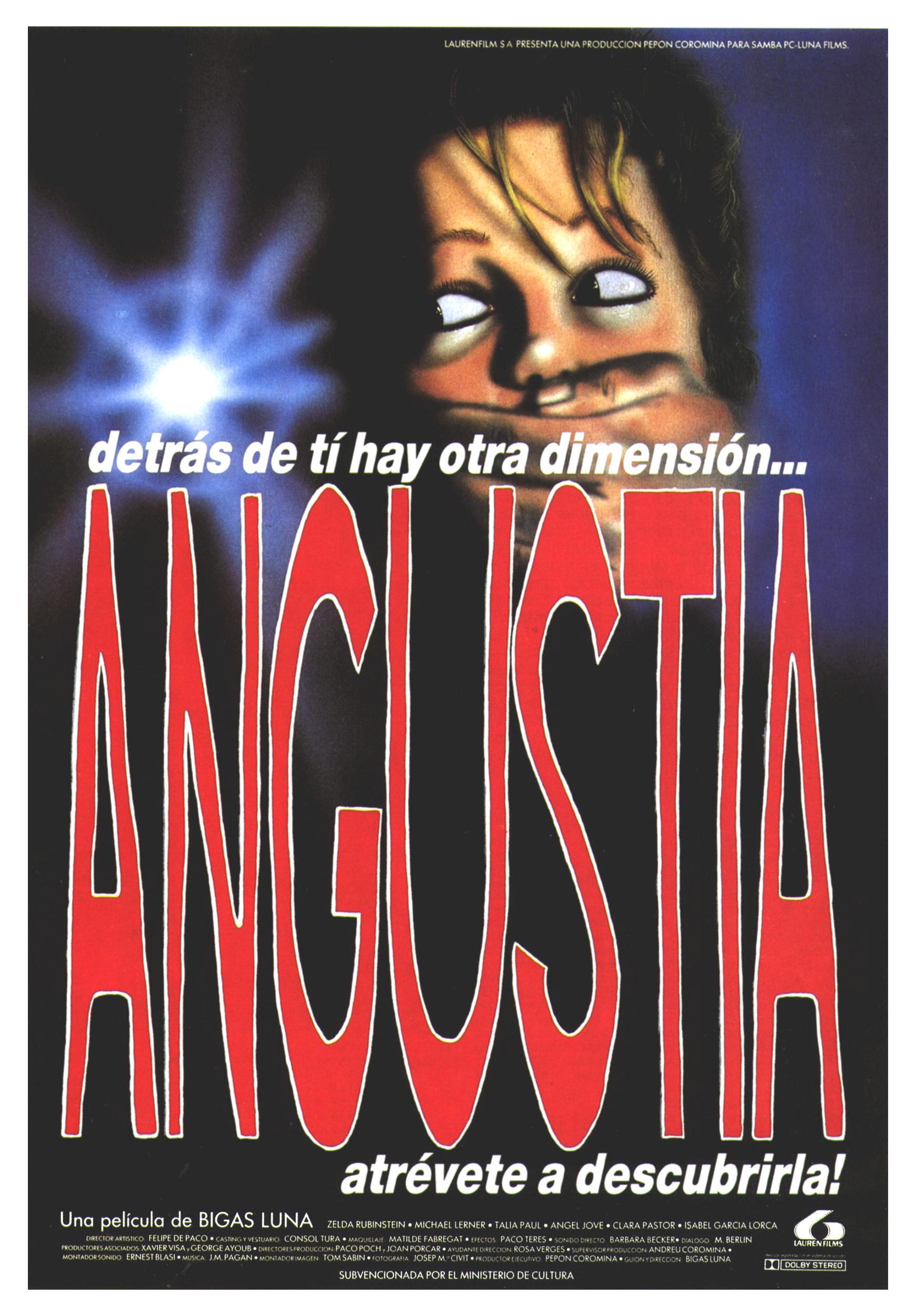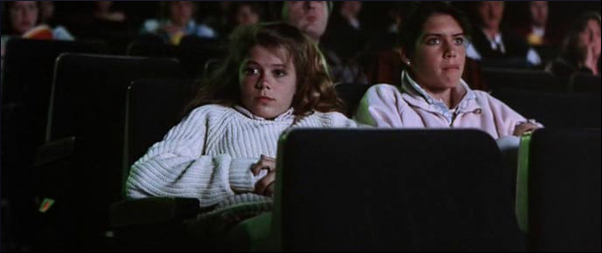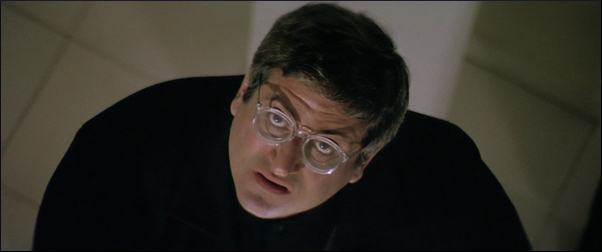
- Anguish
- 86 minutes - Horror
- Original title: Angustia
- Director:Bigas Luna
- Language: Spanish
- Country: Spain
In 1987, director Bigas Luna created something that anticipated many modern trends in the horror genre.

In 1987, director Bigas Luna created something that anticipated many modern trends in the horror genre.

Bigas Luna, a Catalan director who died on April 2013, is justifiably famous for his work in the erotic genre, and is also recognized for having discovered many Iberian acting talents, like Javier Bardem, Penélope Cruz, and Ariadna Gil. However, in the obituaries I’ve read, there was not a single mention of Angustia, his cult 1987 slasher flick, which is notorious for more than one reason.
Zelda Rubinstein (of Poltergeist fame) and Michael Lerner (the megalomaniac studio boss from Barton Fink) headline the international cast of this US-Spanish coproduction, which portrays a mother-son duo that would disturb even the Bates family from Psycho. He’s an optometrist at an important medical firm, though he’s apparently clueless about his job and only stays there thanks to his mother’s financial contributions. They both seem to spend a lot of time at home, professing their love for each other and taking care of an extensive and exotic collection of pets, from snails to fishes, owls, and other birds. This continues until tiny Zelda hypnotizes her son and sends him off on a killing spree. So goes the surface plot, which is good enough for bloodthirsty horror fans like me. But there’s more to it than that. (Spoilers ahead!)
The movie starts with words on a screen, advising audiences to withdraw from the cinema if they cannot take what follows, since some images are quite harsh. 21st century moviegoers are a desensitized crowd, though, and I doubt anyone will do anything but laugh at this disclaimer. After all, they’ve been through The Texas Chainsaw Massacre and The Blair Witch Project, and long ago, they learned the title card that opens Fargo, which claims the movie is based on a true story, is nothing but a hoax. But these same viewers might still not be quite ready for the level of inventiveness offered by this meta-horror movie (that is, a self-conscious horror movie about horror movies). After the first gruesome murder, around the half-hour mark, the camera slowly pulls back, until we see a movie screen inside a theater full of enraptured audience members watching the same movie we are. A second story begins, with two new protagonists: a couple of girls watching the film-within-a-film. One of them is terrified and wants to go home, while her friend gazes at the on-screen atrocities with the kind of masochistic glee any horror buff knows well enough.

The “fictional” killer, meanwhile, finds his way to a “fictional” movie theater, much like the “real” one, further terrifying the protagonist watching the film-within-a-film. At the same time, in the “real” movie theater, a new and distinct menace emerges. Amusingly, the movie never strays from this new set of rules, as it tracks two simultaneous (but mostly similar) stories, one “fictional” and the other “real,” establishing contrasts between them. I don’t think I’ve ever seen another horror movie do something like this, at least not so earnestly. It’s like The Last Action Hero for fans of Friday the 13th.
Of course, in the decades that followed the release of Angustia, meta-horror has become a well-traveled institution. But in 1987, I dare say this film was quite ahead of its time. It’s not completely successful, since the film never explores its themes after pointing them out, but how one responds to this flaw depends on one’s expectations coming in. I was quite happy with the straightforwardness of the first twenty minutes, so the addition of a second level of storytelling (reminiscent of Jorge Luis Borges’s short stories) did nothing but further my interest. Bigas Luna is clearly trying to say something about the helplessness of audience members. Symbolically, this is conveyed by the figure of the murderous optometrist, who literally assaults the eyes of his victims. Arguably, Zelda Rubinstein represents the film director, hypnotizing audiences until they’re incapable of telling the difference between fact and fiction. There is nothing particularly special about the spoken language. Rubinstein and Lerner are dubbed, and all the Spanish dialogue is pretty neutral. Luna might have done this to help him penetrate the international market, and although he probably did not succeed, he created something that anticipated many modern trends in the horror genre, and a number of high-profile current filmmakers must have surely seen Angustia.
